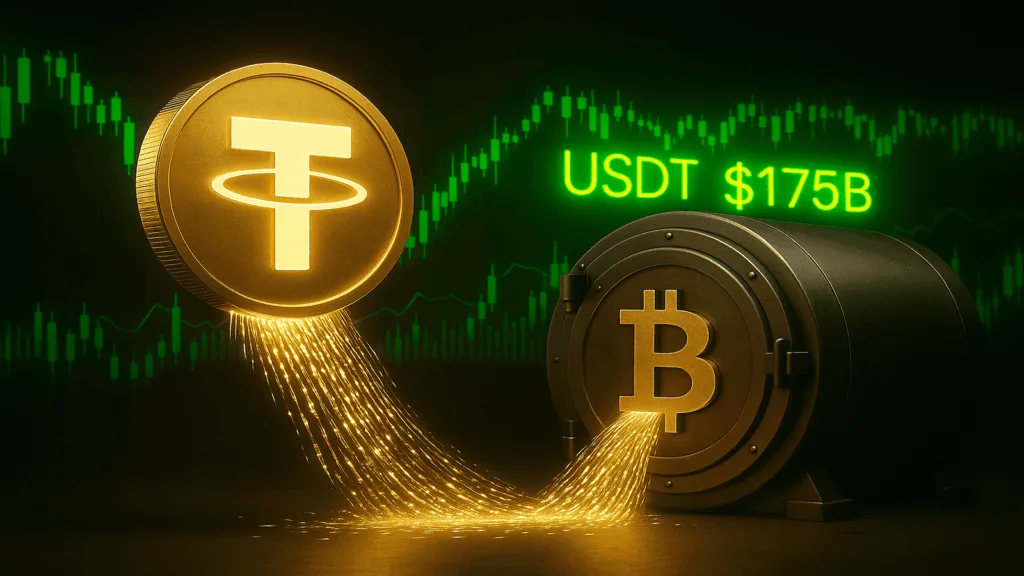- Tether added ~8,889 BTC worth ~$1 billion to its reserves, raising its total Bitcoin holdings to about $9.7 billion.
- The circulating supply of USDT has climbed to approximately $175 billion, a gain of ~10.7% in the recent quarter.
- Tether’s Q1 2025 attestation shows $149.3 billion in assets backing $143.6 billion USDT issued, including large U.S. Treasury holdings, gold, and more.
Tether, the company behind the world’s largest stablecoin USDT, has quietly boosted its Bitcoin reserves. The stablecoin issuer has purchased 8,889 BTC, valued at around $1 billion, according to data by Arkham Intelligence. This move increases its total Bitcoin holdings to about $9.7 billion. Meanwhile, the circulating supply of USDT is approaching $175 billion.
The data shows that the BTC inflow was transferred from a wallet associated with Bitfinex to an address tagged “Tether: Bitcoin Reserves.” This latest addition continues a pattern of end-of-quarter bitcoin transfers by Tether, reinforcing its strategy of gradual accumulation. As of Q1 2025, some sources estimate Tether held over 100,521 BTC.
Newsletter
Get weekly updates on the newest crypto stories, case studies and tips right in your mailbox.
Does USDT need a BTC reserve?
So does Tether need Bitcoin to support USDT? Not strictly. Tether’s core obligation is to maintain enough liquid, high-quality assets, which could be in the form of cash, cash equivalents, short-term U.S. Treasury securities, etc., to meet redemption demands from USDT holders. BTC, gold, and other non-cash assets tend to serve as reserve diversification rather than primary backing.
According to earlier attestations, Tether has reported holdings of U.S. Treasuries, cash equivalents, and other assets in excess of issued USDT, creating a cushion. Bitcoin holdings, while large, represent one slice of the broader reserve mix.
USDT’s supply and support picture
USDT’s expanding supply is slowly rising. It has risen by about 10.7% over the past quarter, bringing its total circulation to nearly $175 billion, per CoinGecko. A recent academic paper estimated that by Q1 2025, Tether directly held roughly $98.5 billion in U.S. Treasury bills, giving it about 1.6% of the total outstanding bill market. That makes Tether one of the largest non-sovereign buyers of U.S. Treasuries. The authors of the report concluded that this could exert downward pressure on short-term yields.
Given its outsized footprint, Tether’s reserve management, transparency mechanisms, and balance sheet choices are likely to increasingly draw attention from regulators and institutional counterparties.













